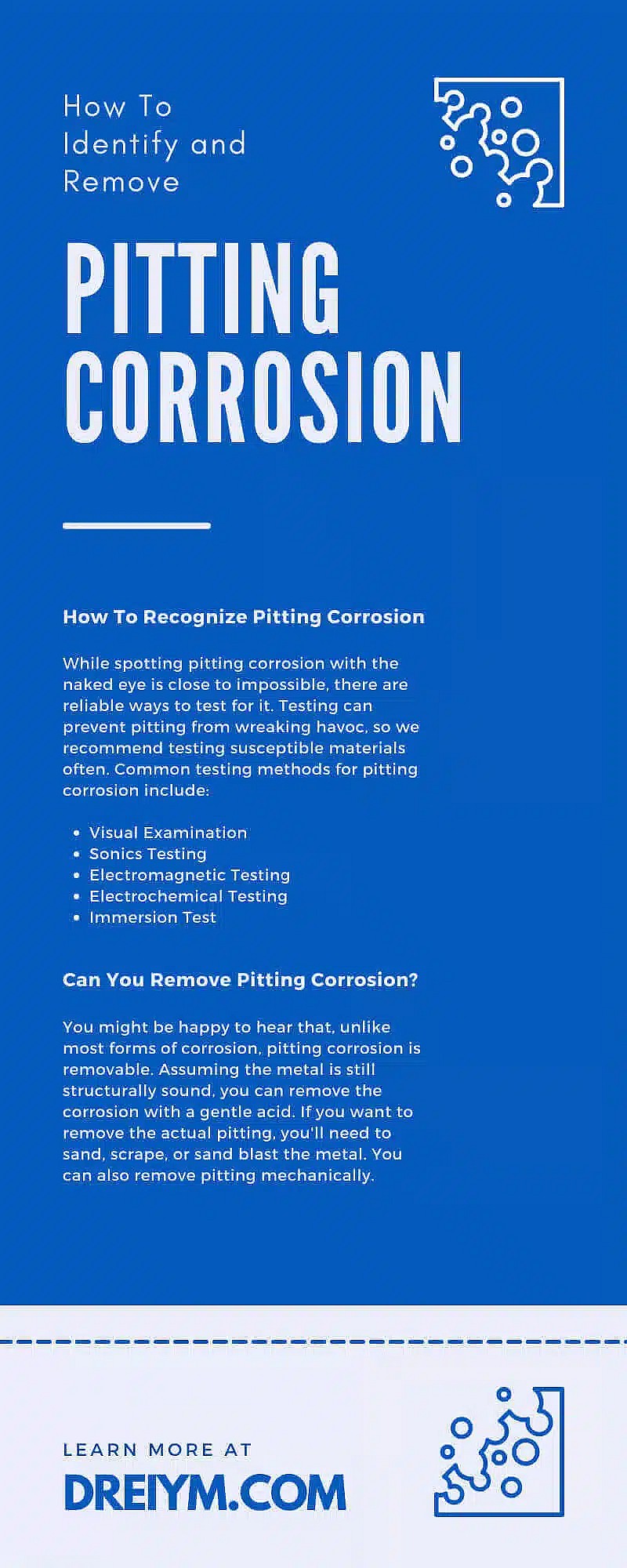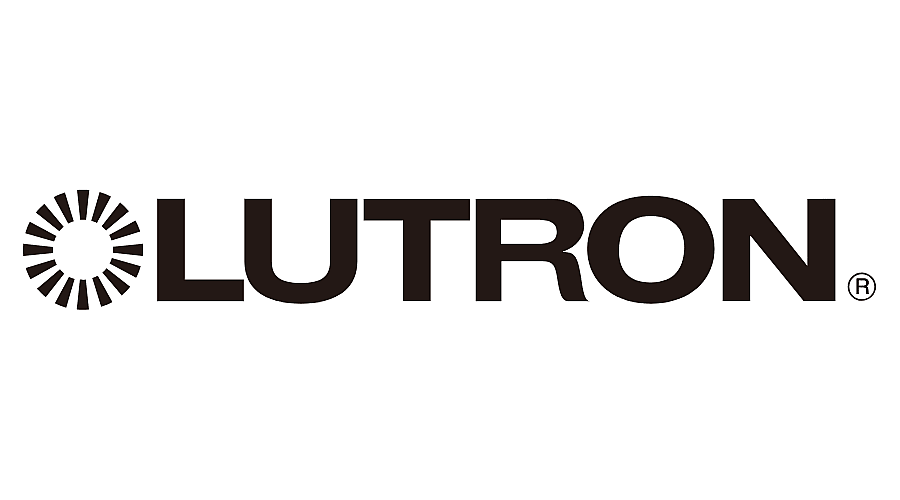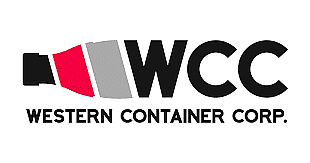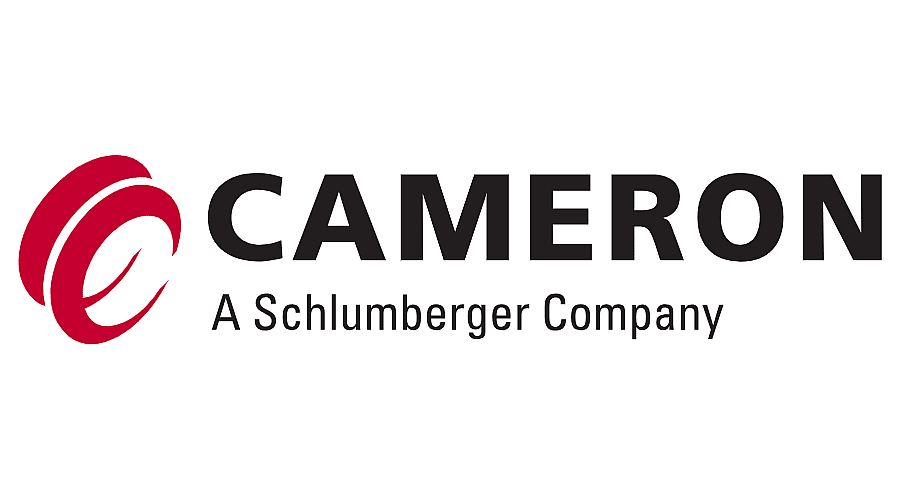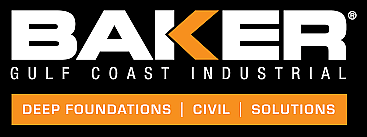How To Identify and Remove Pitting Corrosion
Corrosion is the enemy of metals of all kinds. This damaging process causes metal materials to gradually rust and degrade; and often, it attacks sneakily, undetectable until the damage is already done.
What makes corrosion even harder to detect and prevent is that it comes in many forms. One of these is pitting corrosion, regarded as one of the sneakiest and most damaging forms of corrosion. Pitting corrosion can disfigure metal surfaces as well as compromise their stability.
In this guide, we’ll provide a brief overview of pitting corrosion, what it does, and what causes it. We’ll also go over how to identify and remove pitting corrosion. Read on to learn more about this unique form of corrosion and how to keep it from devastating your metal pipes and other components.
What Is Pitting Corrosion?
Pitting corrosion, known more simply as pitting, is a type of localized corrosion that affects aluminum, iron, steel, and other metal materials. It’s characterized by the rust-covered cavities, or pits, it leaves on the material’s surface. When left unchecked, pitting corrosion can permanently mar the material and thin the metal, leading to a devastating loss of structural integrity.
What Causes Pitting Corrosion?
Most commonly, pitting corrosion occurs due to depassivation of a small area. This small area becomes anodic, while the surrounding area becomes a cathode. This leads to localized corrosion.
But what causes depassivation in the first place? Small defects, like cracks, chips, and scratches! Small scrapes on the surface of the metal may not seem like much of a threat, but these miniscule abrasions can damage the metal’s protective coating and negate its passivity. The most common causes of pitting corrosion include:
- Cracks
- Scratches
- Chips
- Non-uniform stress
- Defective metal substrate
- Exposure to turbulent fluid
- Non-uniform protective coating
- Chemical attacks
So, if your metal is damaged in any way or exposed to choppy waters, keep a close eye out for pitting. Another potential cause of pitting is differential aeration. When a poorly maintained metal is exposed to water or dust particles, a small area becomes deoxygenated. This causes a difference in aeration between it and the surrounding area. A reaction occurs, and rusty pits form on the metal surface.
How To Recognize Pitting Corrosion
Many consider pitting corrosion one of the most dangerous forms of corrosion because of how difficult it is to predict, detect, and prevent. You may think, “Wait, since it creates pits on the metal surface, shouldn’t it be easy to detect?” Unfortunately, the pits it creates are incredibly small. Most are invisible (or near invisible) to the human eye. They’re also commonly covered in a layer of corrosion, which makes them even more difficult to spot.
While spotting pitting corrosion with the naked eye is close to impossible, there are reliable ways to test for it. Testing can prevent pitting from wreaking havoc, so we recommend testing susceptible materials often. Common testing methods for pitting corrosion include:
Visual Examination
Using a microscope, a professional will count the number of pits in a given area. This helps them determine their size and distribution as well as the intensity.
Sonics Testing
During sonics testing, ultrasonic sound energy is transmitted through a couplant onto the metal. These ultrasonic pulses bounce of the metal and are converted into electrical signals. These signals will show the location of pits and other imperfections in the metal.
Electromagnetic Testing
This testing method is used to locate irregularities in the surface of conductive metals like steel and iron.
Electrochemical Testing
Electrochemical tests are another way to test the rate of corrosion in metals. During the test, an electrical current is applied to the working electrode of the metal to create measurable signals.
Immersion Test
A piece of the metal is submerged in a solution. It’s left to sit for a few days. After removal, the rate of corrosion is measured and the pits are examined under a microscope to further determine scope and intensity.
What Materials Are Most at Risk?
Materials that contain bromide, chloride, or hypochlorite ions are the most susceptible to pitting corrosion. Materials exposed to solutions containing fluorides or iodites (like water or sulphides) are also at an increased risk. Some metals prone to pitting are:
- Chromium
- Stainless steel
- Mercury
- Cobalt
- Aluminum
- Copper
Preventing Crevice Corrosion
In addition to knowing how to identify and remove pitting corrosion, you presumably want to know how to prevent pitting in the first place. There are a few ways to minimize the risk of pitting.
Using corrosion-resistant materials is one of the first preventative measures to take. Alloys containing titanium, nitrogen, chromium, and molybdenum resist pitting well. Another effective prevention method is cathodic protection, which prevents corrosion by turning a metal surface into an electrochemical cell. Ideally, you should coat the material with a more reactive metal. This corrosive metal will act as an anode and corrode in place of the original metal, preventing pitting.
Another one of the most effective ways to prevent pitting corrosion is to control environmental factors (humidity, temperature, chloride, pH acids, and salt levels) to the best of your ability. Other methods for preventing pitting include using and maintaining a protective coating and controlling exposure to fluid and dust.
Can You Remove Pitting Corrosion?
You might be happy to hear that, unlike most forms of corrosion, pitting corrosion is removable. Assuming the metal is still structurally sound, you can remove the corrosion with a gentle acid. If you want to remove the actual pitting, you’ll need to sand, scrape, or sand blast the metal. You can also remove pitting mechanically.
Once the corrosion and pitting are gone, you’ll want to prime the metal using one of the following coating methods:
- Zinc phosphate priming
- Zinc spray metallizing
- Chemical coating
- Hot dipping
Looking for ways to keep pitting corrosion at bay? The experts at Dreiym Engineering can help! We offer soil corrosivity testing to measure the corrosivity of the soil your metal components are buried in. We also design and install cathodic protection systems to further lower the risk of pitting. Contact us today to learn more about our corrosion prevention services or to schedule a consultation.
